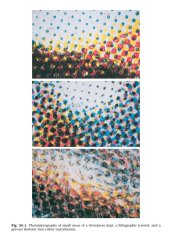sodarum
Member
- Joined
- Jun 27, 2014
- Messages
- 68
- Format
- Medium Format
Greetings,
Does anyone know whether Vogue (the major ones, UK, France, USA etc.) magazines were printed using rotogravure or offset method? I'm actually most interested in the period between 70's and 90's. There are free digital copies of some of the old numbers on archive.org, but they aren't of high enough resolution for me to tell. The new editions seem to use, at least in some cases offset.
I guess the easiest way to answer this question would be for someone with an old Vogue and a magnifier to check it.
If there was a switch between rotogravure and offset, I'd also be interested to know when did it happen?
Thanks
Does anyone know whether Vogue (the major ones, UK, France, USA etc.) magazines were printed using rotogravure or offset method? I'm actually most interested in the period between 70's and 90's. There are free digital copies of some of the old numbers on archive.org, but they aren't of high enough resolution for me to tell. The new editions seem to use, at least in some cases offset.
I guess the easiest way to answer this question would be for someone with an old Vogue and a magnifier to check it.
If there was a switch between rotogravure and offset, I'd also be interested to know when did it happen?
Thanks





 . I have heard more than once about picture quality of older magazines. For sure someone here will give some details about it
. I have heard more than once about picture quality of older magazines. For sure someone here will give some details about it 
